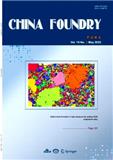
中国铸造(英文版)(China Foundry) 知网万方维普
- CSCD
- 科核
- EI(中国2024)
- 主管单位:
中国机械工业联合会
- 主办单位:
沈阳铸造研究所
- 国际刊号:
1672-6421;EISSN2365-9459
- 国内刊号:
21-1498/TG
- 学科分类:
- 字数:
14000-30000
- 有无基金:
/有基金 100.0%
- 周期:
CN外文-双月刊
- 特殊属性:
- 电话:
024-25611880;25852311-209(202402期)
- 邮箱:
louych@chinasrif.com、zcy@foundryworld.com、zyf@foundryworld.com(202402期)
- 复合因子:
0.67
- 综合因子:
0.455
- 收录:
知网,万方,维普
- 级别:
CSCD,科核,EI(中国2024)
期刊简介
《中国铸造》期刊已被查看: 次
更新频次
单位占比
一作占比
/有基金-100.0%投稿指南
1、投稿方式:在线投稿。
2、刊内网址:(202402期)
http://www.foundryworld.com
http://www.springer.com/41230
自动跳转至:
https://link.springer.com/journal/41230
投稿系统:https://www.editorialmanager.com/chfn
3、刊内邮箱:louych@chinasrif.com(主编)
zcy@foundryworld.com(副主编)
zyf@foundryworld.com(编辑)
4、刊内电话:024-25611880;25852311-209
5、出刊日期:双月刊,逢单月出版。
6、在国家新闻出版总局备案的期刊名为《铸造(英文版)》。
7、官网微信公众号:铸造杂志
2024年5月13日星期一
CHINA FOUNDRY正式启用Editorial Manager采编系统
【微信公众号“铸造杂志”信息】
2020-11-25
2020年11月,CHINA FOUNDRY正式启用Editorial Manager(EM)采编系统,作者和审稿专家可通过以下方式进行投稿、审稿:
方法一
点击www.editorialmanager.com/chfn,直接进入EM采编系统 。
方法二
点击www.springer.com/journal/41230进入斯普林格网站CHINA FOUNDRY主页;点击 Submit Manuscript进入EM采编系统。
方法三
登录www.foundryworld.com(铸造世界网);点击Authors and Reviewers,进入EM采编系统。
方法四
搜索“铸造杂志”公众号,点击关注;点击菜单栏中“期刊在线”,选择“英文刊投稿系统”进行投稿。
提示:所有作者无论是否第一次在我刊投稿,均需要重新注册
在原采编系统JournalX已经投稿的稿件,仍在原采编系统中完成后续的审稿和修改流程。具体路径如下:
点击http://www.foundryworld.com/omrs.htm,直接进入原采编系统。
提示:原采编系统只处理新采编系统上线之前已经投稿的稿件,不再接收新投稿。
作者投稿须知Instructions for Author
【官网信息】
Instructions for Author
Aim and Scope — CHINA FOUNDRY journal is the only English journal that dedicated to China’s foundry industry. As one of the transactions of the Foundry Institution of Chinese Mechanical Engineering Society, CHINA FOUNDRY, published bimonthly to a worldwide readership in English, covers the whole fields of foundry industry for iron, steel and non-ferrous castings, including sand molding casting, die casting, investment casting, etc. It mainly reports advanced scientific and technical achievements, application technology, successful experiences in the production, management and leadership, recent development and industry information.
CHINA FOUNDRY is committed to rapidly delivering high-quality research findings and results to the world. We aim to make the journal top publication in the fields.
Types of Contribution— CHINA FOUNDRY accepts manuscripts that have not been published previously or have not been concurrently submitted to another journal, including Research Papers and Reviews, etc.
File Requirements
Authors should supply your manuscripts s as a Word file containing the text, references, tables and figure captions plus an individual high resolution TIFF, JPEG or EPS.file of each figure, with the specification laid out below.
Manuscript format
In preparing the manuscript as a Word file, there is no need to format the article to a specific template, but please include italic or bold type where necessary. Use hard returns at the end of paragraphs only. Consistency in spacing, punctuation, and spelling is essential.
Manuscript title
The title should be limited to 25 words or less and should not contain abbreviations. The title should be a brief phrase describing the contents of the paper.
Author Information
Complete names and affiliation of all authors, including contact details of corresponding author (Telephone, and E-mail address).
Abstract
The Abstract should be informative and completely self-explanatory, briefly present the topic, state the scope of the experiments, indicate significant data, and point out major findings and conclusions. The abstract should summarize the manuscript content. Standard nomenclature should be used and abbreviations should be avoided. The preferable format should accommodate a description of the study background, methods, results and conclusion. Following the abstract, a list of keywords (3-10) and abbreviations should be included.
Tables and Figures should be included within the manuscript file, not provided as separate files. That is, all the artwork, graphs and charts should be embedded in the text file within close proximity to where it is cited. Do not wrap text around the artwork. Use Word Table mode, not tabs or spaces between columns. Do not provide tables as image files. Do not use a list of Tables and Figures at the end of the paper. The caption should be flush left, not centred.
Photomicrographs should not bear the legend “magnification x 100” (or similar). Instead, a scale bar should be superimposed on or inserted in the photomicrographs. The line drawings with a computer should be proper in size, clear in lines.
Equations should be produced using Word Equation Editor.
Use of SI units is mandatory. Journal style is to use the form S·m−1, A·m−2, W·m−1·K−1, not S/m, A/m2, W/m.K
Unusual abbreviations should be avoided, and all abbreviations that are used must be spelt out in full (with the abbreviation in parentheses) the first time they appear in the text.
Symbols should be explained clearly. Do not use the same symbol to represent more than one variable.
Figures should be cited in a single sequence throughout the text as ‘Fig. 1’, ‘Fig. 2’.
Equations and tables should also be numbered in sequence and referred to in the text as, for example, ‘equation (1)’ and ‘Table 1’ respectively.
Reference style and format
Only published or accepted manuscripts should be included in the reference list. Meetings abstracts, conference talks, or papers that have been submitted but not yet accepted should not be cited. Reference and notes should be numbered serially in a single sequence. Citations in the text should be as superior characters, thus [1,2,4–6] , inside any punctuation marks. References cited for the first time in a table or figure caption should be numbered as if they appeared in the text where the table or figure is first mentioned. References should be set out in a complete list at the end of the paper, numbered according to their appearance in the text, not positioned as footnotes.
Journal abbreviations in references follow the ISO system, e.g.
Int. J. Cast. Met. Res.,
Mater. Sci. Technol.,
Int. Mater. Rev.,
If the Journal abbreviation is not known, the journal title should be given in full.
(1) Book references should give full bibliographic details, including
Author name, name of book, place of publication, publishing house, year of publication, and start page ― end page, e.g.
J. V. Wood. Future developments of metals and ceramics. Vol. 1, ed. J. A. Charles et al., London: The Institute of Materials, 1992: 235–239.
(2) Reference to a chapter in an edited book:
Mettam G R, Adams L B. How to prepare an electronic version of your article. In: Jones BS, Smith RZ (Eds.), Introduction to the Electronic Age. New York: E Publishing Inc., 1999: 223-230.
(3) Translated book references should include:
Author name, name of book, translator, place of publication, publishing house, year of publication and start page ― end page.
(4) Conference references (Proceedings) must include
Author name, title of paper, name of conference, organiser or publisher of the meeting, location, and the date, and start page ― end page, e.g.
Xu F, Guo E, Loria E A, et al. Thermal stability of modified 718 alloys aged for 2000 hours at 700 °C. In: Proceedings of the International Symposium on Superalloys 718, 625, 706 and Various Derivatives, TMS, Pittsburgh, Pennsylvania, 1997: 503-509.
(5) Serial Publication (Journals) references should include:
Author name, title of paper, place and year of publication, name of journal, volume number (issue number), and start page ― end page, e.g.
Wang Zhifeng, Zhao Weimin, Li Haipeng, et al. Fabrication of quaternary Mg-Zn-Y-Ce quasi-crystal alloys and their strengthening effects on AZ91 Magnesium alloys. China Foundry, 2010, 7(4): 342-348.
Shechtman D, Blech I, Gratias D, et al. Metallic phase with long-range orientational order and no translational symmetry. Physical Review Letters, 1984, 53(20): 1951-1953.
(6) Patent references should include:
Applicant, name of patent, country, patent number, date of release, publishing house, year of publication.
(7). Degree Thesis references should include:
Author name, title of thesis, city and unit of preserving the thesis, year of publication, and pagination, e.g.
Zhang Jinshan. Formation of spherical Mg-based quasicrystal and its strengthening behavior on Magnesium alloys. Ph.D. Thesis. Taiyuan: Taiyuan University of Technology, 2008: 29-31.
(8) Reference to Technology Standard
Code of technology standard, title of technology standard.
(9) Reference to Technology Report
Author name, title of report, code and serial number of report, unit of preserving report, year of publication
(10). Reference to Electronic Literature [EB/OL]
Author name, name of paper, website, date of publication.
How to submit a paper — All manuscripts must be submitted through the journal’s online submission system at www.springer.com/41230 or www.editorialmanager.com/chfn.
Review Process — CHINA FOUNDRY bears responsibility for insuring that submitted manuscripts receive expert and unbiased reviews. CHINA FOUNDRY strives to complete the peer review of all submitted papers and the publication of accepted manuscripts in a timely manner and to keep the authors informed of any problems with their manuscript. All submitted manuscripts are initially evaluated by the editors and the Editor-in-Chief. If the editors and the Editor-in-Chief think that your manuscript is suitable for publication in CHINA FOUNDRY, your manuscripts will be submitted to peer-review.
CHINA FOUNDRY is under no obligation to submit every manuscript to formal peer review. Papers that are judged by the editors or the Editor-in-Chief to be of low priority or inappropriate for publication in CHINA FOUNDRY, may at the discretion of the editors or the Editor-in-Chief, be rejected without formal written reviews by referees. All reviewers serve anonymously, and their identities are protected.
Scientific Misconduct — Falsification of data, suppression of relevant data, and fabrication of data are considered fraud. Plagiarism and fraud are widely understood to constitute scientific misconduct.
Reviewers and readers of CHINA FOUNDRY should report any suspected duplicated publication, plagiarism, falsification to the Editor and the Editor-in-Chief of CHINA FOUNDRY.
This includes reporting on the publication of similar or duplicate articles by the same author and of text or figures that appear to have been lifted verbatim or reproduced from the publication of other authors. Upon reviewing such a report, the Editor-in-Chief shall conduct an official inquiry in a prompt, considerate, and confidential manner. The inquiry will thoroughly examine the validity of the charges and the author will be notified in writing of any and all accusations as well as be provided with all relevant documents. The author will be given the opportunity to respond to accusations and CHINA FOUNDRY will conduct all inquiries in complete confidence. Every consideration will be given to protecting the rights and reputation of all concerned.
In the case of clear evidence of fraud, plagiarism, or falsification of data, the author's institution will be notified and the authors may be prohibited from future publication in CHINA FOUNDRY.
Peer-review and article processing fees — CHINA FOUNDRY has an article processing fee (CNY900 per page) for Chinese authors, and no more than CNY7,900.
Authors outside China do not need to pay the article processing fee. That is to say, we do not receive any fee to overseas authors.
Introduction to the first author — CHINA FOUNDRY has an introduction to the first author in the title page, so the first author is required to send his/her English CV to us via email or put directly it in your technical manuscript when you submit.
Brief introduction to the first author in title page must contain:
1. E-mail address;
2. Sex, date of birth;
3. The title of a technical or professional post;
4. Research interests; and/or
5. Position in professional and scientific associations;
6. The number of technical papers published.
Research Data Policy— The journal encourages authors, where possible and applicable, to deposit data that support the findings of their research in a public repository. Authors and editors who do not have a preferred repository should consult Springer Nature’s list of repositories and research data policy.
· ● List of Repositories
· ● Research Data Policy
General repositories - for all types of research data - such as Figshare and Dryad may also be used. Datasets that are assigned digital object identifiers (DOIs) by a data repository may be cited in the reference list. Data citations should include the minimum information recommended by DataCite: authors, title, publisher (repository name), identifier.
· ● DataCite
Springer Nature provides a research data policy support service for authors and editors, which can be contacted at researchdata@springernature.com.
This service provides advice on research data policy compliance and on finding research data
repositories. It is independent of journal, book and conference proceedings editorial offices and
does not advise on specific manuscripts.
· ● Helpdesk
Editorial Office of CHINA FOUNDRY
Foundry Journal Agency
Add: No.17 South Yunfeng Street, Tiexi District, Shenyang 110022, China
Tel: + 86-24-25611880
Website: www.foundryworld.com
Editor-in-Chief: Yan-chun Lou, email: louych@chinasrif.com
Executive Deputy Editor-in-Chief: Chun-yan Zhang, email: zcy@foundryworld.com
Editor: Ya-fang Zhao, email: zyf@foundryworld.com
Subscription: Ya-fang Zhao, email: zyf@foundryworld.com
《中国铸造》同类金属学|金属工业期刊
-

中国材料进展(原:稀有金属快报)
北核,CSCD,科核,武A,高T2
CN中文-月刊影响因子2.089
-
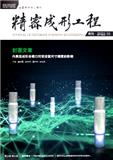
精密成形工程
北核,科核,高T2,高T3,武B+
CN中文-月刊影响因子1.331
-
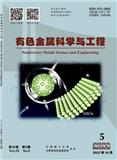
有色金属科学与工程
北核,科核,武A+,高T2,高T3
CN中文-双月刊影响因子1.271
-

金属学报
北核,CSCD,科核,武A+,高T1,EI(中国2024)
CN中文-月刊影响因子2.851
-
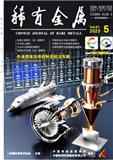
稀有金属
北核,CSCD,科核,武A+,高T1,EI(中国2024)
CN中文-月刊影响因子2.374
-
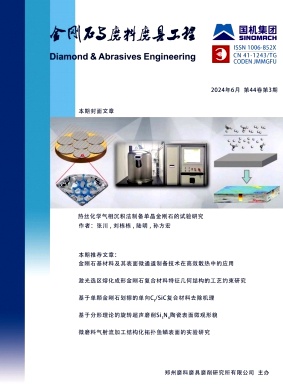
金刚石与磨料磨具工程(原:磨料磨具与磨削 人造金刚石与砂轮)
北核,科核,武A-,高T3,CACJ-核心
CN中文-双月刊影响因子0.837
-
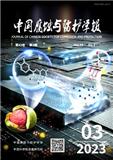
中国腐蚀与防护学报
北核,科核,武A,高T2
CN中文-双月刊影响因子1.721
-
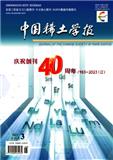
中国稀土学报
北核,CSCD,科核,武A,高T1,EI(中国2024)
CN中文-双月刊影响因子1.452
常见问题
-
中国铸造杂志社官网、联系方式是什么?
中国铸造杂志社官网:http://www.foundryworld.com
投稿网址:https://www.editorialmanager.com/chfn联系电话:024-25611880;25852311-209(202402期)
投稿邮箱:louych@chinasrif.com、zcy@foundryworld.com、zyf@foundryworld.com(202402期) -
中国铸造杂志是核心期刊么?
中国铸造是核心期刊,级别是:CSCD,科核,EI(中国2024), 是:金属学|金属工业分类下的知网,万方,维普收录的期刊。
-
请问你们是中国铸造杂志社吗?
我们不是《中国铸造》杂志社。本站主要从事期刊信息展示与期刊推荐,不是任何杂志官网,直投稿件请联系杂志社。本站仅提供免费的学术指导、论文辅导、期刊投稿信息整理收集服务。
-
你们指导服务后可以保证文章被发表吗?
期刊发表的成功与否,主要取决于文章内容的质量。编辑老师会根据研究领域、创新性等多因素进行考量。我们会帮助您理解期刊的发表要求,助力提升发表几率,从而增加发表的机会。
-
晋级论文能否在报纸上发表?
在学术界,论文的发表往往被视为研究者职业发展的重要一环。晋级论文,即为了获得更高职称或学术地位而撰写的学术论文,通常需在专业期刊上发表。然而,许多人可能会问
